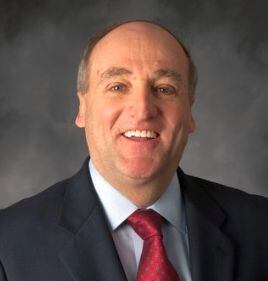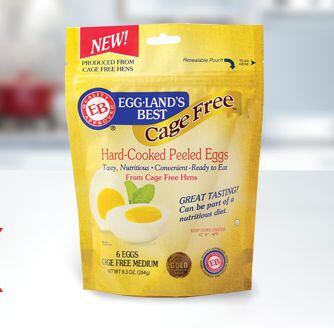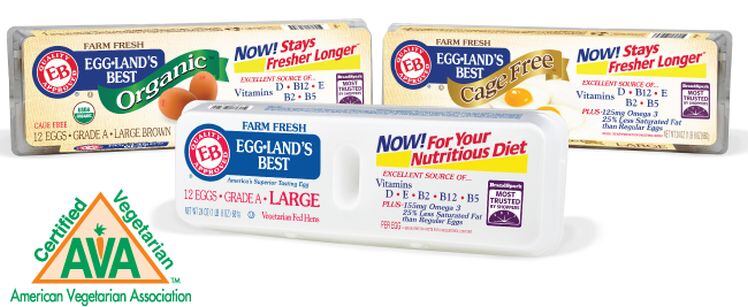Market reporter Brian Moscogiuri was speaking to FoodNavigator-USA after egg producer Rose Acre Farms told Bloomberg it was “shutting our [cage-free] construction program down,” and Cal-Maine Foods CEO Dolph Baker said the company would be "adjusting" its cage-free egg production capacity to reflect reduced demand.
As United Egg Producers (UEP) told this publication in April, while leading retailers have pledged to go cage-free by 2025, they are not necessarily willing to pay extra now to help suppliers fund the costs of transitioning to cage-free production systems given that consumer demand is far weaker than had been anticipated, said Moscogiuri.
According to USDA, said Moscogiuri, we’ll need an estimated 173m cage-free layers to service demand for US grocery retailers that have made commitments, 27.6m for restaurant chains, 12.7m for foodservice and 8.1m for food manufacturers by 2025.
Producers can’t just snap their fingers in 2024 and switch millions of birds to cage free
As of October 1, 2017, he said, we have 47.8m cage-free layers (this includes organic layers) out of 312.4m (around 15% of production), and to convert another 173m+ will take time and money that producers are not willing to spend now if customer demand isn’t there yet.
“Producers can’t just snap their fingers in 2024 and suddenly switch millions of birds to cage-free housing, so there’s a huge sense of uncertainty that’s soured the entire market for the last year or more,” said Moscogiuri.
“People thought they knew what the path was, and some were forging ahead towards cage free, but now they are back to being uncertain about demand and even what the specifications for cage free will be in 2025.
“A couple of years ago generic egg prices were shooting through the roof because of avian flu, and as the gap between generic and specialty eggs prices closed dramatically, a lot of consumers were trading up. Retailers saw a big spike in their specialty egg sales at the same time as animal welfare groups were pressuring them to make commitments to cage free, so it seemed to make sense at the time.
“But I think perhaps they thought it was the consumer [interest in cage-free] that was driving sales, when really it was mainly because the price differential between generic and specialty eggs had [temporarily] closed up.
“But now, generic egg prices are way down again, wholesale prices have hit decade-lows and consumers are shifting back towards generic eggs because they are so much cheaper [than cage-free].”

“Our largest customers have made public commitments to transition away from conventional eggs and exclusively offer cage-free eggs by future specified dates. However, the higher price gap between conventional eggs and specialty eggs has resulted in reduced demand for specialty eggs. We have adjusted our production levels in line with current customer demand for cage-free eggs, and we are well positioned to increase our capacity when demand trends change...”
Dolph Baker, CEO, Cal-Maine Foods, Oct 2, 2017 (Q1, 2018 earnings statement)
It’s a game of wait and see
Aggressive restocking after the 2015 avian flu outbreak meant that we “ended up with more birds after the flu than we had prior, and coupled with reduced demand, the market has hit record lows and the price differential between generic and specialty eggs is even wider than it was before the flu,” he claimed.
“And some of these retailers that have really pushed cage free have seen sales go down significantly, not only in the egg section but also in overall store traffic as consumers are going to other stores where eggs and other staple items are being priced more aggressively.”
So what happens next?
It’s “hard to say what will happen next,” he said. “We’re seeing producers pulling back, slowing down cage-free conversion plans and playing wait and see.”
Eggland’s Best: There is always a balancing act in the egg business
Charlie Lanktree, CEO and president at New Jersey-based Eggland’s Best Eggs, which has generated steady double digit sales growth in recent years for its nutritionally enhanced branded eggs, told FoodNavigator-USA: “Everyone put in cage free facilities and now they can’t sell the products because they are too expensive.

“There is always a balancing act in the egg business, but for the last year and a half producers have been under tremendous pressure. Market prices have gone as high as $2.88 a dozen and as low as 52 cents, so some of the [cage-free] building programs have slowed down or stopped. When one retailer is selling eggs for a few cents and another is selling only cage free for $2.99, it’s a tough situation.
“And then you’ve got people questioning whether cage free is as good for the birds as people think? At Eggland’s Best, we just say that our brand is the best possible brand because it is healthier and fresher, whether it’s classic (caged), cage-free, or organic. We offer all of these options.”
Snack time: Peeled eggs are a much better option than a candy bar
Eggland’s Best branded eggs, which first hit the market in 1992, are produced and distributed by a franchise network of established egg producers in 32 states who agree to feed a proportion of their hens proprietary animal by-product-free feed (grains, canola oil, rice bran, alfalfa, kelp, vitamin E) in accordance with a US patent entitled ‘Eggs Compatible with a Cholesterol Reducing Diet and Method of Producing the Same.’
The Eggland’s Best branded eggs they produce have significantly higher levels of vitamin E, D, B2 and B12, nearly three times more omega-3 fatty acids (mainly ALA and DHA) and iodine, more folate and lutein, and 25% less saturated fat than regular eggs. They also stay fresher longer, said Lanktree.

“We’re close to $900m in retail sales if you look at IRI or Nielsen data, and we had 19 years of double digit unit growth in a row. Over the last year or so with generic egg prices going way down it’s been tougher for us, but we’re still doing great. We’re also introducing new products like hard cooked peeled Eggland’s Best eggs in two packs and deviled eggs, new ways to make eggs more convenient.
“If it’s 3pm in the afternoon and you need a pick me up – peeled eggs are a much better option than a candy bar – they are so nutrient dense and a cheap source of high quality [complete] protein.”

According to USDA figures collated by the American Egg Board, US per capita egg consumption is on a steady upward trajectory, with blips in 2007-9 (during the recession) and 2015 (when bird flu decimated parts of the industry):
- 2011: 250.0
- 2012: 254.2
- 2013: 258.6
- 2014: 266.6
- 2015: 252.9
- 2016: 267.4
- 2017: 274.6
